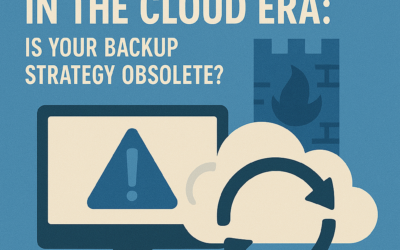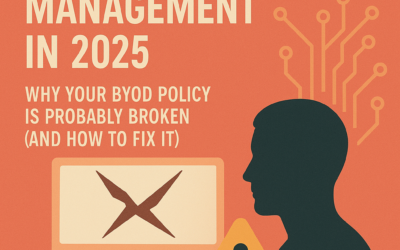In 2013, the White House’s official Twitter account was hacked. The message: “Breaking: Two Explosions in the White House and Barack Obama is injured.” For 20 minutes, the world stood still.
Everything went wild.
The Dow Jones dropped 150 points — it was madness. One small 40-character message and the US and the rest of the world came to a halt.
Since then, every type of business – big or small – has seen the dangers of cybercriminals.
Of those plots and how they can turn your world upside down, cyber attacks have become increasingly prevalent and sophisticated in the digital age, posing significant risks to businesses worldwide.
They are rising, and MO for lone wolf/solitary hackers is no longer the standard. Understanding the threat landscape is crucial, as cybercriminals employ various tactics to infiltrate systems, steal sensitive data, and disrupt operations.
Let’s delve into some alarming statistics and data points that underscore the urgency of cyber attack prevention.
Threat Landscape
In recent years, the frequency and severity of cyber-attacks have escalated, with businesses of all sizes and industries falling victim to cybercriminals. And why is that?
Before we dive into the stats, let’s give you the inside scoop on this criminal free-for-all. Hacking is a very, very lucrative business. A single score can land hackers thousands, even millions of dollars. And most hackers work multiple jobs at a time.
Also, most hackers have a bossiness-like mentality — they coordinate with other groups, build relationships, swap information, develop strategies, and invest heavily in R&D. It’s important to switch gears and stop thinking of them as lone wolves.
Hackers nowadays and their farms are akin to the sort of venture you might see in Silicon Valley.
Due to international issues and legal loopholes, most are hard to spot and bring to justice. Most are well concealed or live in regions where extradition orders are non-existent.
So, it’s a practice with huge payoffs and little to no risk.
Let’s look at some of these eye-opening statistics:
- According to the FBI, the cost of cybercrime in the United States exceeded $4.2 billion in 2020 alone. The average cost of an attack is about $4 million. And businesses that are targeted once will likely face another attack or breach within the year. Why? Hackers smell the blood in the water.
- Phishing attacks, where attackers trick individuals into divulging sensitive information, remain prevalent. In 2021, phishing attempts increased by 510%, according to the Anti-Phishing Working Group. Studies have shown that a company’s first line of defense is education and compartmentalization — teach your employees what to not fall for and create information firewalls within your organization.
- Ransomware attacks have surged in recent years, with a 62% increase reported in 2021 compared to the previous year, according to the Cybersecurity and Infrastructure Security Agency (CISA).
- According to the 2023 NETSCOUT Threat Intelligence Report, Distributed Denial of Service (DDoS) attacks continue to threaten businesses, with an average duration of 9 hours.
The Most Prevalent Cyber Attacks
Before delving into how to prevent cyber attacks and measures, it’s crucial to identify the most prevalent cyber attacks businesses face today — to give you an idea of the sort of hell those hackers have come up with. Criminals are incredibly creative and flexible when it comes to attack vectors. Let’s look at some of the most common cyber attacks.
- Phishing Attacks: Cybercriminals masquerading as legitimate entities to deceive individuals into divulging sensitive information
- Ransomware Attacks: Involve encrypting files or systems and demanding payment for their release.
- Distributed Denial of Service (DDoS) Attacks: Attacks aim to overwhelm a target’s servers or networks with a flood of traffic. The average — 9 hours in 2021, according to the NETSCOUT Threat Intelligence Report.
Preventing Cyber Attacks: Best Practices
Now let’s give a quick – easy to follow – guide on what you can do to prevent cyberattacks. Some are DIY options, while others require the help of specialists.
Implementing Strong Cybersecurity Policies
A rule book is critical — having a guide that you can follow is essential. A comprehensive cybersecurity policy manual is the foundation for protecting against cyber attacks. These policies should encompass access control measures, data encryption protocols, and secure password practices. Developing and enforcing these policies consistently across all levels of the organization is essential.
Your employees should be aware of it and continually be educated on their procedures.
Investing in Cybersecurity Technologies and Infrastructure
The truth is that there are thousands upon thousands of out-of-the-box options you can purchase that will protect you.
You might need more customizable options depending on your industry and business size. Deploying robust cybersecurity technologies is critical for safeguarding against cyber threats.
Firewalls, antivirus software, and intrusion detection systems can help detect and mitigate potential attacks. When selecting cybersecurity technologies, businesses should consider their needs and budget constraints. It’s important to understand that 95% of attacks can be prevented with automation and cybersecurity tools.
Employee Education and Awareness Training
According to the World Economic Forum, the most common online password is 123456—most passwords are popular, simple, short, and predictable. Unfortunately, your employees are your weakest link. Staff play a crucial role in preventing cyber attacks, making ongoing education and awareness training essential. Training programs should educate staff about common cybersecurity scams and how to recognize and respond to suspicious activities.
By fostering a culture of cybersecurity awareness, businesses can empower employees to be vigilant against potential threats.
It’s essential to come to terms with how the world works nowadays and the prevalence of remote work. Your employees are using faulty WiFi connections, working off their own tools—with their weaknesses—and basically constantly dipping their toes into murky digital waters.
Partnering with Cybersecurity Experts
You might need an extra set of hands if your business is large or you play in the following sandboxes: finance, software development, e-commerce, and agriculture. Why those? Well, in most cases, you’re working with valuable data – including user information – making you a giant whale for most hackers. Catching you off guard lands them a considerable payoff.
Partnering with cybersecurity experts or outsourcing certain security functions might be a need. These experts offer specialized knowledge and resources, helping businesses strengthen their security posture and respond effectively to cyber threats. Collaborating with trusted cybersecurity partners can enhance overall cybersecurity resilience.
Regular Security Assessments and Response Planning
Hackers adapt — criminals adapt. And they evolve faster than any other lifeforms on the planet. Two days after the WHO made COVID a pandemic — cyberattacks went through the roof. Digital deviants of this nature are always on the lookout for an opportunity. They constantly change tactics and technological tools and can spot a weakness in your shield from a mile away. Regular security assessments and developing response plans are essential to effective cybersecurity management.
Security assessments help identify vulnerabilities and assess risk exposure, allowing businesses to address potential weaknesses proactively. Response planning ensures that companies are prepared to respond swiftly and effectively to cyber attacks, minimizing their impact on operations.
Prevent Cyber Attacks by Prioritizing Cybersecurity Preparedness
Protecting your business from cyber-attacks requires a proactive and comprehensive approach. By implementing strong cybersecurity policies, investing in the right technologies, educating employees, partnering with cybersecurity experts, and conducting regular security assessments, businesses can mitigate the risks posed by cyber threats. It’s essential to continuously evaluate and update cybersecurity practices in response to evolving threats, ensuring your business remains resilient and secure in the face of cyber attacks.




